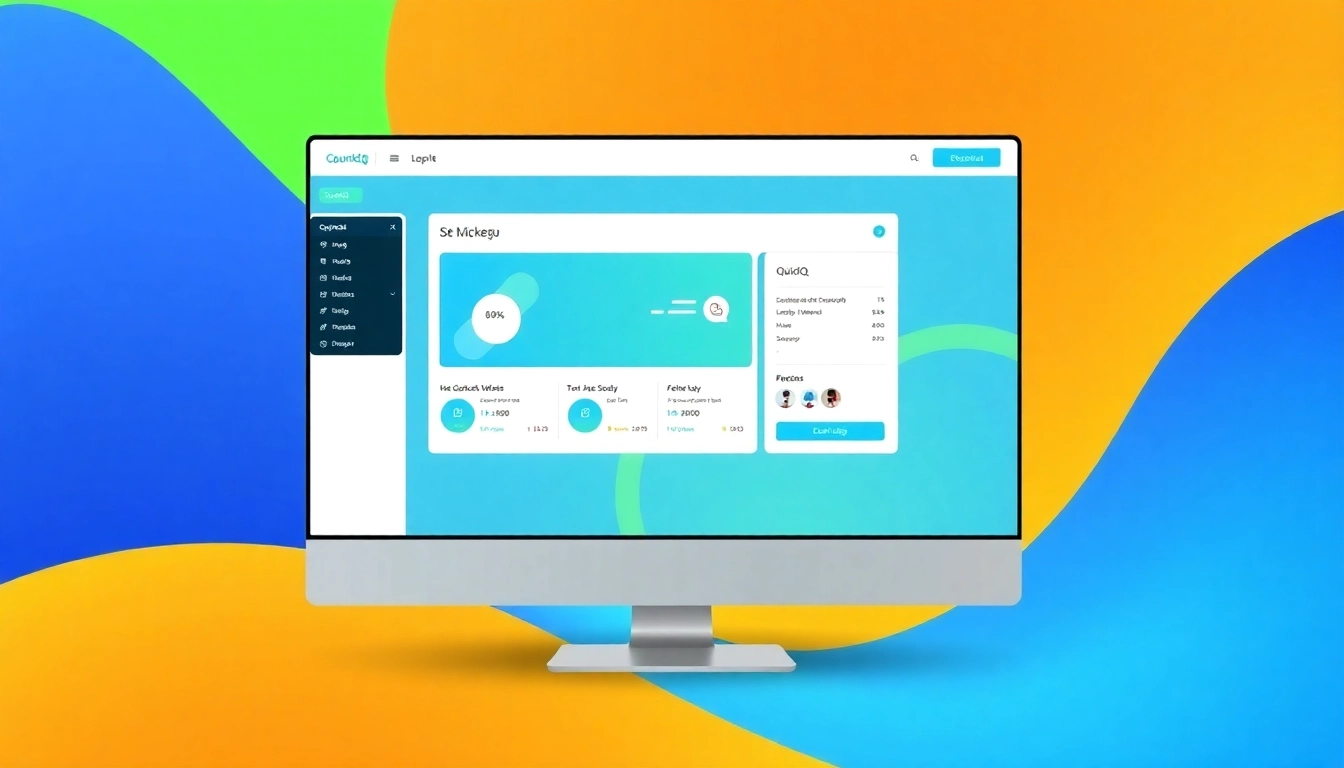Understanding the Basics of Screenshot APIs
What is a Screenshot API?
A screenshot API is a specialized web service that allows developers to capture screenshots of web pages programmatically. This tool is essential for various applications, including website testing, monitoring, and reporting. By leveraging a screenshot api, developers can automate the process of generating visual representations of websites without the need for manual intervention. This API can generate images in different formats such as PNG, JPEG, or PDF, providing flexibility for different use cases.
How Screenshot APIs Work
Screenshot APIs function by sending requests to a server that renders the requested web pages in a browser. Once the page loads, the API takes a screenshot and returns the image to the requester. Usually, this process involves the following key steps:
- Request Submission: The developer sends a request to the API, including the URL of the web page to be captured.
- Rendering: The API spins up a headless browser, navigates to the specified URL, and generates the screenshot.
- Image Delivery: Upon successfully capturing the screenshot, the API sends the image back to the developer in the specified format.
- Integration: The developer can then integrate the received image into their application or use it for further processing.
Common Use Cases for Screenshot APIs
Screenshot APIs serve a variety of purposes across industries. Some common use cases include:
- Web Testing: Automated testing frameworks utilize screenshot APIs to capture the visual state of web applications at specific points during testing.
- Website Monitoring: Businesses use screenshot APIs to monitor website uptime and visual consistency. If a webpage appears broken or has changed unexpectedly, alerts can be generated.
- Reporting: Marketing teams can use screenshots in reports to visually showcase changes in web content or ad campaigns over time.
- Social Media Sharing: Applications may capture website screenshots to generate previews for links shared on social media platforms.
- Compliance Tracking: Organizations can use screenshots to comply with legal requirements by maintaining visual records of published content.
Benefits of Using a Screenshot API
Speed and Efficiency in Development
One of the most significant advantages of integrating a screenshot API into your workflow is the speed at which it operates. Manual screenshot capturing can be time-consuming, especially for testing and debugging purposes. By automating this process through an API, developers can significantly speed up development cycles, allowing for quicker iteration and deployment of web applications.
Quality and Fidelity of Outputs
Another benefit of using a screenshot API is the high quality and fidelity of the rendered outputs. These APIs often operate using real browsers and can reproduce visual elements accurately under various conditions. This level of detail is crucial for developers who want to ensure consistent user experience across different devices and browsers. The ability to generate high-definition images allows teams to identify visual issues effectively and maintain brand integrity.
Reduces Manual Tasks
By automating the capturing of screenshots, teams can alleviate the burden of manual tasks that can lead to human error. Repeatedly taking screenshots for testing, documentation, or reporting can easily become cumbersome. The screenshot API handles this workload, freeing up valuable time for developers, marketers, and quality assurance teams to focus on higher-value tasks.
Implementing a Screenshot API into Your Workflow
Step-by-Step Guide for Integration
Integrating a screenshot API into your existing workflow involves several steps:
- Assess Your Needs: Define your use cases to determine the features you require from a screenshot API, such as image format support or browser compatibility.
- Select an API: Research options that match your criteria based on performance, features, pricing, and reliability.
- API Key Registration: Register for an API key, which facilitates authentication and secures your access to the API.
- Setup Development Environment: Configure your development environment to integrate the API, including installing any necessary SDKs or libraries.
- Implement Screenshot Functionality: Write code that makes API calls to generate screenshots based on user inputs or automated processes.
- Test Integration: Carefully test the integration in various scenarios to ensure that the API functions correctly and the output meets quality standards.
- Monitor and Optimize: Continuously monitor API performance and adjust your implementation for optimal efficiency.
Selecting the Right Screenshot API for Your Needs
Choosing the right screenshot API involves evaluating several factors:
- Features: Review the features offered by the API, such as support for different file formats, URL accessibility, and advanced rendering options.
- Performance: Investigate the API’s speed and reliability. Look for customer reviews and performance metrics that attest to quick response times and uptime guarantees.
- Ease of Integration: Consider how well the API integrates with your existing tech stack. APIs should have robust documentation and support to simplify integration.
- Cost: Compare pricing models to find an API that fits your budget while meeting your desired functionalities.
Common Challenges During Implementation
While integrating a screenshot API, you may face several challenges:
- Network Latency: High latency can lead to delays in API response times, affecting the overall application performance. To combat this, consider the geographic proximity of the API servers.
- Image Quality Issues: Sometimes, the output images may not meet expectations in terms of fidelity. Ensure that you optimize settings within the API to balance quality and performance.
- Error Handling: Implement robust error handling to manage any failures during the screenshot generation process. Logging can provide insights into recurring issues.
Performance Metrics for Evaluating Screenshot API Effectiveness
Key Metrics to Track
To ensure the effectiveness of your screenshot API, track these key performance metrics:
- Response Time: Measure the time taken for the API to respond to requests. Faster response times generally lead to better user experiences.
- Uptime: Monitor the API’s uptime percentage to evaluate reliability. An API with high uptime ensures consistent performance during critical moments.
- Image Resolution: Evaluate the quality of the generated images by measuring resolution and fidelity against your requirements.
- Error Rate: Track the number of errors encountered during API interactions to understand failure points and address them proactively.
Using Feedback to Optimize Use
Gathering user feedback and performance metrics is vital for optimizing the use of your screenshot API. Conduct regular reviews involving:
- User Surveys: Solicit input from team members using the screenshots in their workflows to gauge satisfaction with the output quality and utility.
- Performance Analysis: Regularly analyze performance data to identify trends and issues, allowing for timely optimizations.
- Iteration: Use feedback and metrics to iteratively improve how the screenshot API is implemented within your applications.
Real-World Examples of Successful Implementations
Learning from successful case studies can provide valuable insights into maximizing the benefits of a screenshot API:
- Quality Assurance Teams: Identify how QA teams employ screenshot APIs to rapidly capture visual states of web applications at multiple stages of testing.
- Marketing Departments: Explore how marketing teams utilize these APIs for conducting competitive analysis through visual comparisons of websites and landing pages.
- Development Projects: Examine projects that enhance collaboration between developers and designers through consistent visual documentation via screenshots.
Future Trends in Screenshot APIs
Advancements in Image Quality
The demand for high-resolution and high-fidelity images is continuously increasing as businesses emphasize user experience. Future screenshot APIs are expected to incorporate advancements in image processing technology, leading to more refined and detailed screenshots, including features like 3D rendering or augmented reality elements.
Integration with Other APIs
As APIs become more interconnected, we can expect screenshot APIs to integrate seamlessly with other tools, such as analytics platforms, content management systems, or CI/CD pipelines. This enhanced connectivity will streamline workflows, enabling teams to make data-driven decisions based on visual insights.
Predictions for Screenshot API Development
Looking ahead, we anticipate the development of more intelligent screenshot APIs that utilize AI and machine learning to analyze and interpret web pages at a deeper level. This evolution may result in features that automatically highlight changes across versions or suggest optimizations based on user interface best practices.



